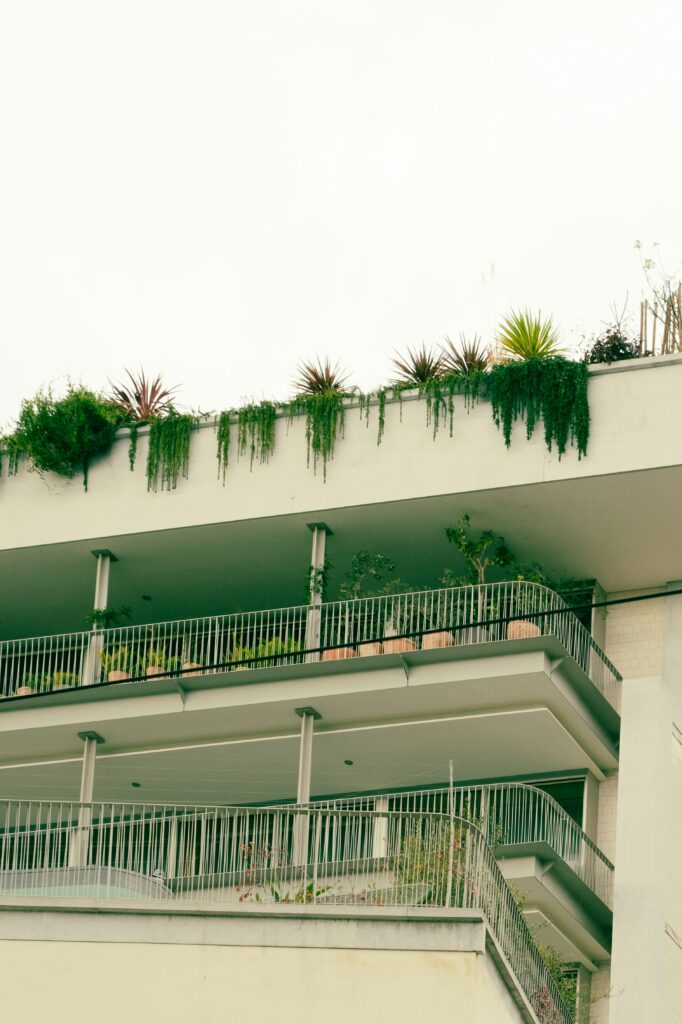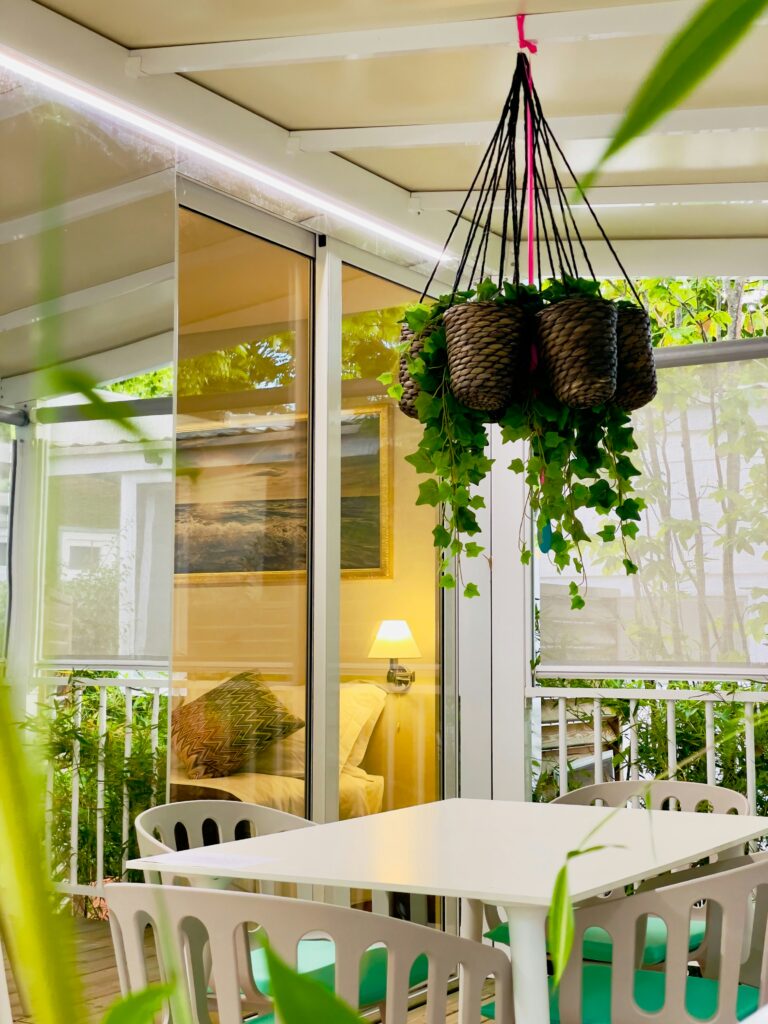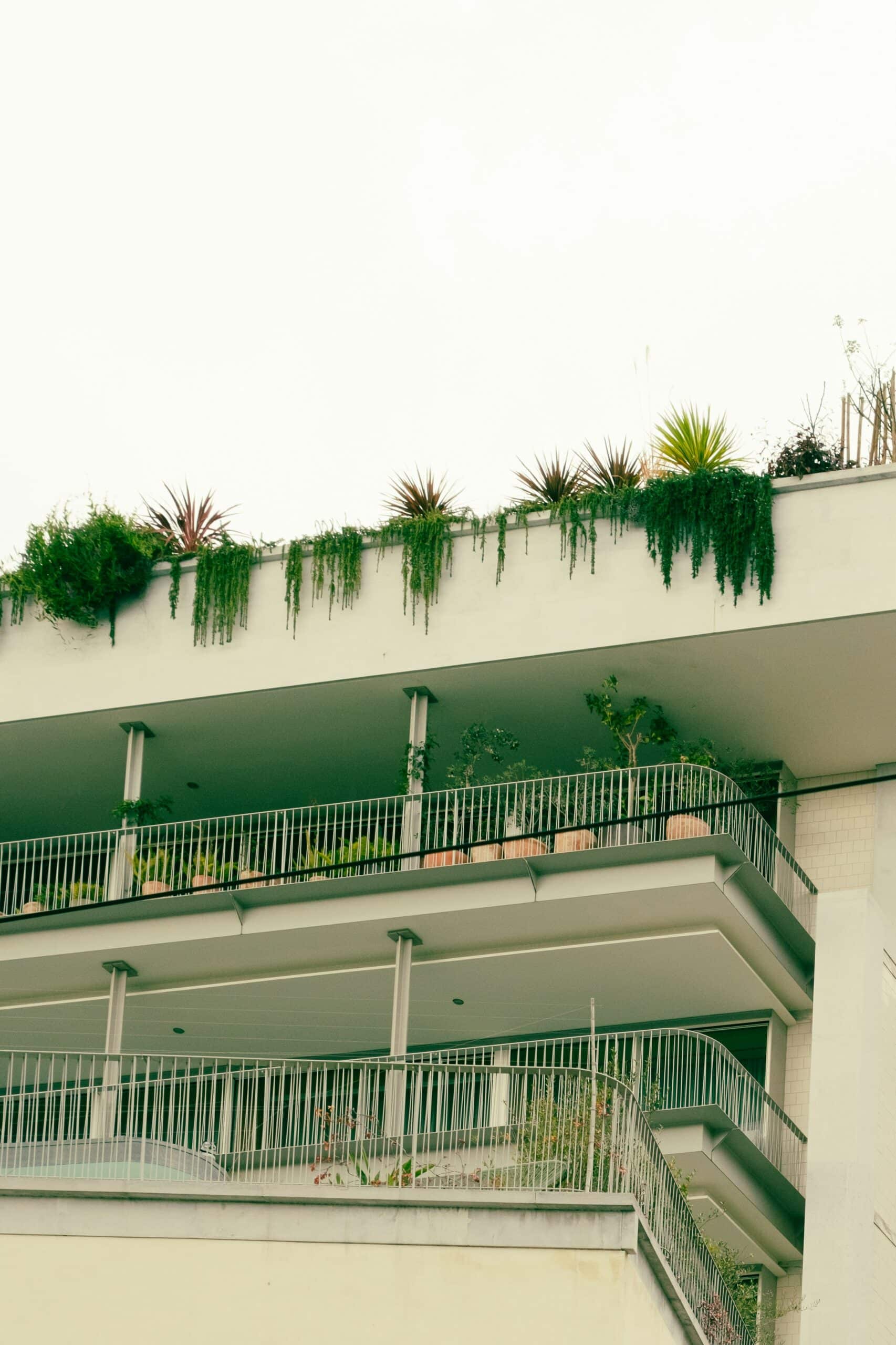Anúncios
These innovative systems are not only an aesthetic addition to your space but also a boon for those who cherish the joy of home gardening but struggle with limited space. Let’s dive into this enlightening exploration of turning your balcony into a flourishing green oasis.

Greenery is an essential part of urban living, providing a refreshing touch amidst concrete jungle. However, the scarcity of space often hampers this desire for an outdoor oasis. This is where modular vertical gardening systems come into play. Designed to maximize growing space, these systems are the perfect solution for urban gardening enthusiasts looking to transform their balconies into a stunning vertical garden.
Anúncios
This post will unravel the secrets of vertical gardening systems, their benefits, and how they can revolutionize your gardening experience. From providing a fresh supply of home-grown veggies to improving air quality and offering a visually pleasing setup, vertical gardening systems indeed offer a myriad of benefits.
We’ll delve into the different types of modular vertical gardening systems available, helping you understand their unique features and benefits. Whether it’s hydroponic systems, traditional pot-based systems, or living wall planters, we will explore them all, providing you with the knowledge to make an informed decision.
Anúncios
Lastly, practical tips on choosing the right system for your space, maintaining your vertical garden, and common mistakes to avoid will be shared. This post will leave no stone unturned, preparing you for a successful gardening journey. So, let’s embark on this green adventure and transform your balcony into an urban paradise with modular vertical gardening systems.
Understanding Modular Vertical Gardening Systems
Modular vertical gardening systems, as the name suggests, refer to gardening systems designed to grow plants in a vertical orientation, usually on walls or other vertical surfaces. These systems, often modular in nature, use space efficiently and can be adapted to a variety of environments, including balconies.
In the heart of these systems lie several components. At the core, there is the growing medium, typically soil or a soilless hydroponic equivalent. This medium, often contained within modules or cells, provides the necessary nutrients for plant growth. Then there’s the irrigation system. Unlike traditional horizontal gardens, vertical systems need specialized watering mechanisms. These can range from manual watering to automated drip systems, depending on the system complexity and gardener’s preference.
Benefits of Vertical Gardening
Space Utilization: Vertical gardening systems maximize the use of vertical space, enabling you to grow more plants in a limited area. This is particularly beneficial for apartment dwellers with limited outdoor spaces like balconies.
Sustainability: These systems typically use water more efficiently than traditional gardening methods. The vertical orientation facilitates gravity-based water flow, reducing the need for energy-intensive water pumping.
Aesthetic Appeal: A lush, green vertical garden can significantly enhance the aesthetic appeal of your balcony, transforming it into a vibrant, living art piece.
Implementing a Modular Vertical Garden
Setting up a modular vertical garden on your balcony involves several steps, which we will discuss in detail.
Step 1: Choose Your System
Vertical gardening systems are available in various forms, from simple pocket planters to sophisticated hydroponic setups. Your choice should depend on factors such as available space, budget, and the types of plants you intend to grow.
Step 2: Prepare Your Balcony
Ensure your balcony can support the weight of the vertical garden. Also, consider factors like sunlight exposure and wind direction. If necessary, install a protective screen or shade to protect your plants.
Step 3: Install Your System
Installation procedures vary based on the system type. Follow the manufacturer’s instructions carefully. Ensure the system is securely mounted and the irrigation system functions properly.
Selecting Plants for Your Vertical Garden
Choosing the right plants is a critical step in ensuring the success of your vertical garden. The plants you select will directly affect how the garden looks and how well it thrives. Here are key factors to consider when selecting plants:
1. Size and Growth Habit
- Vining Plants: These are great for vertical gardening as they naturally grow upwards or trail down, making them ideal for creating a cascading effect. Examples include ivy, sweet peas, and morning glory.
- Compact Growth Habits: Choose plants that stay compact and won’t spread out too much. These are especially useful for modular vertical gardens where space is more constrained.
- Trailing Plants: Plants like petunias, nasturtiums, or creeping thyme are perfect for hanging or cascading over the edges of planters, creating an attractive visual effect.
2. Light Requirements
- Full Sun Plants: If your vertical garden gets full sun (6+ hours of direct sunlight), opt for sun-loving plants like lavender, tomatoes, and herbs like basil and rosemary.
- Partial Shade Plants: If your garden gets filtered light, choose plants like ferns, begonias, or parsley, which do well in dappled sunlight.
- Shade-Loving Plants: If your garden is shaded most of the day, look for plants such as hostas, ferns, or coleus, which thrive in lower light conditions.
3. Watering Needs
- Group Similar Watering Needs: Some plants require consistently moist soil, like ferns or lettuce, while others, like succulents or lavender, prefer drier conditions. Group plants with similar water requirements together to make watering easier and more efficient.
- Drought-Tolerant Plants: Consider using plants like succulents, sedums, and herbs such as thyme, oregano, and rosemary for vertical gardens where water drainage may be a concern.
Maintaining Your Modular Vertical Garden
Proper maintenance is key to ensuring your vertical garden thrives. Here’s a detailed guide on how to care for your modular vertical garden:
1. Watering and Feeding
- Watering Frequency: Watering needs depend on the type of plants you’ve selected and the weather conditions. Be sure to check the moisture level of the soil regularly. In a vertical garden, the upper sections may dry out faster, so water thoroughly from top to bottom.
- Feeding Plants: Plants in vertical gardens often have limited access to nutrients, so it’s important to fertilize them regularly. A balanced, water-soluble fertilizer is recommended. Slow-release fertilizers can be added to the soil mix or a liquid feed can be applied during watering.
2. Pruning and Deadheading
- Pruning: Regular pruning helps your plants maintain their shape, encourages new growth, and removes dead or diseased parts. Trim trailing vines to keep them from overgrowing or crowding other plants.
- Deadheading: Remove spent flowers or dead blooms to encourage new growth and keep your garden looking neat and fresh.
3. Monitoring Pests and Diseases
- Pest Control: Keep an eye out for common garden pests like aphids, mealybugs, and spider mites. Natural solutions like neem oil or insecticidal soap can be effective in dealing with these pests.
- Disease Prevention: Inspect plants regularly for signs of fungal or bacterial infections. If a plant is infected, remove the affected parts to prevent the spread of disease to healthy plants.
4. Replanting and Replacing Plants
- Replanting: Over time, some plants may not thrive as expected. If a plant is not doing well due to environmental conditions or age, consider replacing it with another plant that is more suitable for your garden’s conditions.
- Seasonal Replacement: If you have seasonal plants, like annual flowers, replace them with new ones as needed. This will help maintain a constant visual appeal in your vertical garden.
5. Check Watering System
- Irrigation System Maintenance: If you’re using a drip irrigation system or self-watering planters, periodically check the system to ensure that all parts are functioning properly and that water is reaching all areas of the garden evenly.
6. Cleaning
- Maintain Cleanliness: Over time, dirt, debris, and dust can build up on the plants and the surrounding frame. Clean your plants and planters occasionally to maintain healthy airflow and optimal light conditions for the plants. Use a soft cloth or gentle brush to clean the leaves and stems.
By regularly monitoring and maintaining these key elements, your modular vertical garden will continue to provide a beautiful, thriving space for plants to grow. Happy gardening! 🌿🌱er. Here are the key areas to focus on for effective maintenance:
Watering and Feeding
Watering is one of the most critical aspects of garden maintenance. Since vertical gardens are often built with various plants, each with different needs, it’s important to monitor water requirements carefully. Here’s what to keep in mind:
- Watering Needs: Different plants require different amounts of water. Be sure to monitor the moisture levels of your garden frequently. With a modular vertical system, water can sometimes pool at the top, which may lead to overwatering in the lower sections. It’s important to water thoroughly but avoid waterlogging the plants.
- Drip Irrigation System: If your vertical garden is equipped with a drip irrigation system, make sure the emitters are working properly. A timer can help ensure consistent watering at optimal intervals for your plants’ needs.
- Feeding: Plants need regular feeding to thrive, especially in a confined space where the soil’s nutrients can get depleted over time. Use a water-soluble, balanced fertilizer that suits the type of plants you have. Apply fertilizer at the recommended intervals to support plant growth, flowering, and fruiting.
Pruning and Deadheading
Regular pruning is essential to ensure your vertical garden stays healthy and attractive. Here’s why:
- Promote Growth: Pruning removes dead or damaged parts of the plant, which helps encourage new growth. It also reduces the risk of diseases spreading to healthy areas.
- Control Size and Shape: Some plants may overgrow, especially those that climb or spread. Regular pruning helps maintain a neat appearance and ensures that plants don’t overcrowd one another.
- Deadheading: For flowering plants, remove spent blooms (deadheading) to encourage new flowers and prevent the plant from putting energy into seed production. This also helps maintain a tidy look.
Monitoring and Adjusting Light
Light is a crucial element for your plants’ health. Be sure to monitor the amount of natural light your vertical garden receives:
- Indoor Gardens: If your modular vertical garden is indoors, ensure the plants are getting enough natural light. If not, consider using grow lights to supplement light during the darker months.
- Outdoor Gardens: If your vertical garden is placed outdoors, ensure the plants are getting the right amount of sunlight. Some plants may need more sun, while others prefer shade. Adjust the position of your garden to meet the specific needs of the plants.
Pest and Disease Control
Even in a vertical garden, pests and diseases can occasionally occur. Monitor your plants regularly for signs of infestations or poor health:
- Look for Pests: Check the undersides of leaves, stems, and the soil for any signs of pests like aphids, mealybugs, or spider mites. If you spot any, treat the affected plants with an organic insecticide or soap solution.
- Watch for Disease: Keep an eye out for fungal infections or yellowing leaves. If your plants are infected, remove the affected parts immediately, and consider using a natural fungicide if necessary.
Replacing Plants
Sometimes, despite all efforts, plants may not thrive in your vertical garden. This could be due to improper light, water conditions, or a plant just not being suited for your environment. If a plant isn’t performing well:
Plant Replacement: Swap out struggling plants with new ones that are better suited to your garden’s conditions. Be sure to choose varieties that are compatible with each other, particularly in terms of watering and sunlight needs.
Evaluate the Conditions: Ensure that the plant’s needs are being met (light, water, and temperature). If it’s a problem of space, you may need to replace it with something that fits better.

Conclusion
In conclusion, the “Grow Up! Elevate Your Balcony Garden with Modular Vertical Gardening Systems” is a game-changer for gardening enthusiasts. This innovative method not only saves space but also elevates the aesthetic appeal of your balcony or terrace. It allows you to nurture a variety of plants, thus enriching your green space with a diverse range of flora. It is eco-friendly and easy to maintain, providing a viable solution for urban dwellers who crave for their own patch of greenery.
These modular systems have completely revolutionized the concept of urban gardening. Whether you have a green thumb or are a novice, these systems simplify the gardening process, making it accessible and enjoyable for all. Moreover, they give a unique, modern twist to traditional gardening methods.
However, remember, while these systems make gardening more manageable, plants still need care and attention. Regular watering, exposure to sunlight, and adequate nutrients are crucial to keep your vertical garden thriving.
So, if you’ve always wanted to have a garden but were constrained by lack of space, it’s time to consider a modular vertical gardening system. It’s a unique blend of style, sustainability, and convenience that will elevate your balcony garden to new heights. Happy gardening! 🌱🌻🌿

